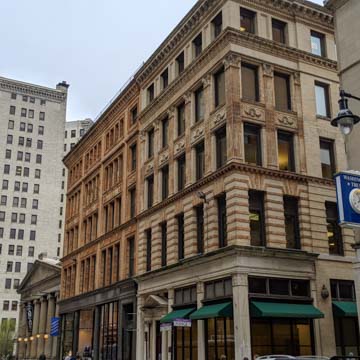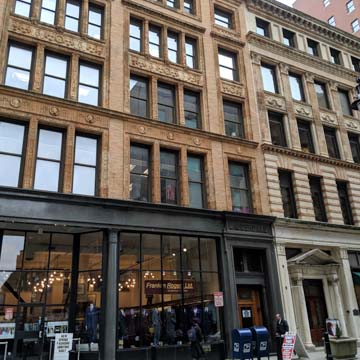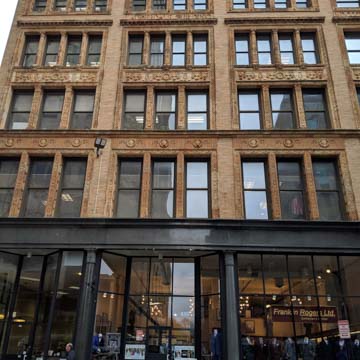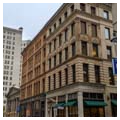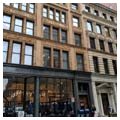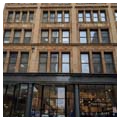Two unrelated clients engaged the same firm at the same time to design adjacent speculative office buildings. Edmund Willson did these buildings fresh from his design of the Providence Telephone Building in Stanford White's tawny, scintillant brick and terra-cotta Neo-Renaissance manner and just before he began to design the Providence Public Library. Of the two, the Lauderdale is the more completely clad in terra-cotta. Beneath its shimmering surface one also senses how lightly these materials cover the underlying steel frame, which appears at the ground floor in all its linear nakedness except that the supporting metal frame is also sheathed, here by ornamented metal plates. In a more conservative manner, the Lauderdale anticipates Albert Harkness's daring interpretation of the terra-cotta-sheathed skeleton in his Summerfield Building ( PR15). The adjoining masonry elevation, predominantly stone with some brick, is still more conservative, both in the greater prominence of its masonry wall and in the greater restraint of its ornament, much of this in terra-cotta. Whereas Willson employed terra-cotta as overall sheathing for the Lauderdale Building, he used it more discreetly as trim for the Francis Building. The two are handsome complements, all the more for their different approaches to the ornamented facade.
You are here
Lauderdale Building and Francis Building
1894, Stone, Carpenter and Willson (both). 1977, rehabilitation of Lauderdale Building, Michael Ertel. 144 and 150 Westminster St.
If SAH Archipedia has been useful to you, please consider supporting it.
SAH Archipedia tells the story of the United States through its buildings, landscapes, and cities. This freely available resource empowers the public with authoritative knowledge that deepens their understanding and appreciation of the built environment. But the Society of Architectural Historians, which created SAH Archipedia with University of Virginia Press, needs your support to maintain the high-caliber research, writing, photography, cartography, editing, design, and programming that make SAH Archipedia a trusted online resource available to all who value the history of place, heritage tourism, and learning.

